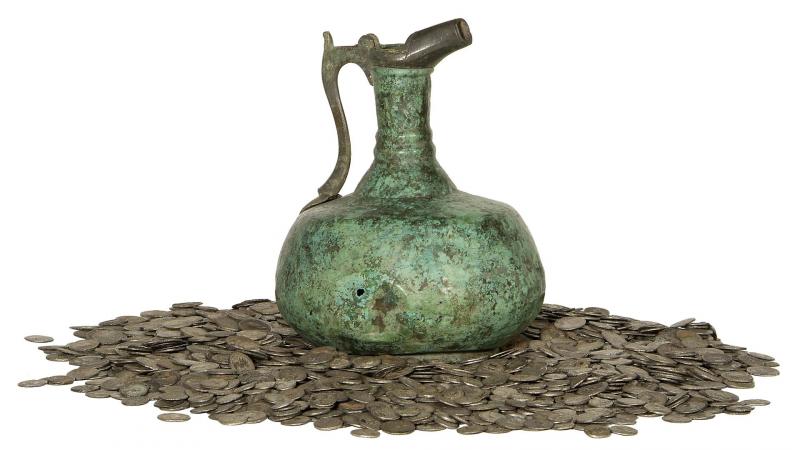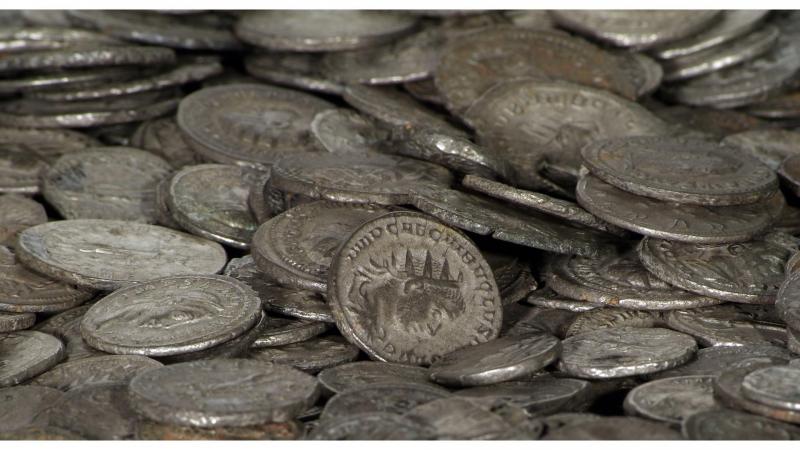The monetary treasure of Clavier III, which was discovered on 20 May 1967 during an excavation conducted on the site of the Vicus de Vervoz, is made up of 1,680 pieces of silver (1,085 deniers and 595 Antoninus) stored in a bronze sheet-metal jar. This model of a mouthpiece container, which is cast in one piece with the handle, is characteristic of the end of the 2nd century and the first half of the 3rd century.
The oldest piece is a denier bearing the effigy of the Emperor Commodus (180–196), which was minted in Rome in 186; the most recent is an Antoninus issued in a secondary workshop in the West in 254 AD, for the emperor Gallien, at the beginning of his joint reign with Valerian I. The best represented reigns are those of Severus Alexander (222–235) (428 coins), Elagabal (218–222) (380 coins) and Gordian III (238–244) (353 coins).
The Antoninus, or double denier, can be distinguished from the denier by the radiate crown worn by the emperor and the crescent moon on which the effigy of the empresses rests. This monetary value, which was instituted in 215 under the Emperor Caracalla (211–217), gradually replaced the denier. Faced with the political instability of the Empire and subsequent currency devaluations, many savers hoarded good quality coins, as indicated by the number of deniers still present in this deposit. Currencies issued in oriental workshops were particularly in demand, because their weight and title were higher than those minted in the West. Thus, 94 pieces of this treasure were issued at Antioch (Turkey), at Emese and at Laodicea (Syria).
Between 250 and 270 CE, Frankish incursions in Belgian Gaul caused the looting and destruction of many settlements. This period of uncertainty resulted in the burying of many personal fortunes.
The study of this hoarded deposit – which was presumably buried in 255 or 256 AD – sheds significant light on the monetary circulation in Belgian Gaul during the third century AD.

